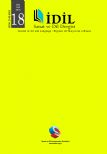DİLBİLİM, SİNİRDİLBİLİM VE BEYİN ARAŞTIRMALARI BULGULARI IŞIĞINDA ÇOCUKLARDA İLK VE İKİNCİ DİL GELİŞİMİ VE İKİDİLLİLİK
FIRST AND SECOND LANGUAGE DEVELOPMENT IN YOUNG CHILDREN AND BILINGUALISM IN LIGHT OF LINGUISTICS, NEUROLINGUISTICS AND FINDINGS FROM BRAIN RESEARCH
Author(s): Yunus Pınar, Nihal Kubilay Pınar, Bengül ÇetintaşSubject(s): Language acquisition, Psycholinguistics, Neuropsychology
Published by: Sanat ve Dil Araştırmaları Enstitüsü
Keywords: Language acquisition; neurolinguistics; brain research; bilingualism; multilingualism;
Summary/Abstract: The present review shows that infants begin picking up elements of what will be their first language in the womb, and certainly long before their first coo according to the current guidelines and it presents a descriptive approach to bilingualism and multilingualism. This article is the outcome of a thorough survey of literature and primarily it aims to present the similarities and differences between the L1 and L2 acquisition in light of linguistics, neurolinguistics and findings from brain research. This Review will illustrate various thought and new hypotheses on first and second language development, bilingualism and multilingualism derived from studies in linguistics, neurolinguistics and brain research. In the context of our paper we shall try to describe aspects and stages of first language acquisition from even before birth especially the 20th week of the fetal development of the baby to 60th week of life, as well as the second language acquisition process, which is divided into three types: simultaneous, consecutive and adult. In particular, we will present and discuss some of the main results of the brain researchers like Franceschini and De Bleser and we shall interpret them.
Journal: İdil Sanat ve Dil Dergisi
- Issue Year: 4/2015
- Issue No: 18
- Page Range: 1-23
- Page Count: 23
- Language: Turkish

